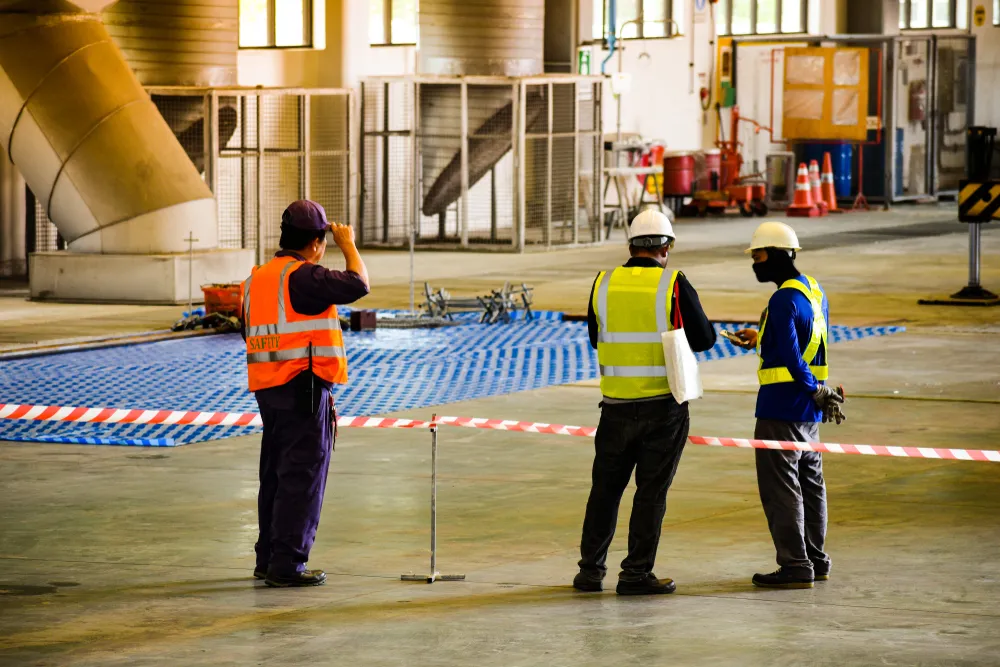Roar Solutions Fundamentals Explained
Roar Solutions Fundamentals Explained
Blog Article
The Only Guide to Roar Solutions
In such an environment a fire or explosion is possible when three fundamental conditions are satisfied. This is commonly referred to as the "hazardous location" or "combustion" triangle. In order to secure setups from a potential explosion a technique of evaluating and classifying a possibly harmful area is required. The objective of this is to make sure the appropriate choice and installment of devices to ultimately prevent a surge and to make sure safety of life.

(https://www.giantbomb.com/profile/roarsolutions/)
No tools needs to be mounted where the surface temperature of the tools is higher than the ignition temperature level of the offered threat. Below are some usual dirt unsafe and their minimal ignition temperature level. Coal Dirt 380C 225C Polythene 420C (thaws) Methyl Cellulose 420C 320C Starch 460C 435C Flour 490C 340C Sugar 490C 460C Grain Dirt 510C 300C Phenolic Material 530C > 450C Aluminium 590C > 450C PVC 700C > 450C Soot 810C 570C The probability of the threat being existing in a focus high sufficient to trigger an ignition will vary from location to area.
In order to classify this threat an installation is separated right into areas of risk relying on the quantity of time the harmful is existing. These areas are described as Areas. For gases and vapours and dirts and fibers there are 3 areas. Zone 0 Area 20 A hazardous atmosphere is very most likely to be present and might exist for long durations of time (> 1000 hours annually) or perhaps constantly Zone 1 Area 21 A dangerous environment is feasible but unlikely to be existing for lengthy durations of time (> 10 450 C [842 F] A category of T6 indicates the minimum ignition temperature level is > 85 C [185 F] Dangerous area electrical equipment perhaps made for usage in greater ambient temperatures. This would indicated on the ranking plate e.g. EExe II C T3 Ta + 60C( This implies at 60C ambient T3 will not be exceeded) T1 T1, T2, T3, T4, T5, T6 T2 T2, T3, T4, T5, T6 T3 T3, T4, T5, T6 T4 T4, T5, T6 T5 T5, T6 T6 T6 A T Course ranking of T1 means the maximum surface temperature level produced by the tool at 40 C is 450 C. Assuming the linked T Class and Temperature level rating for the devices are appropriate for the location, you can constantly utilize a tool with a much more rigorous Division score than required for the area. There isn't a clear response to this inquiry. It truly does rely on the kind of devices and what repair work require to be executed. Equipment with certain examination procedures that can not be executed in the field in order to achieve/maintain third event ranking. Need to return to the factory if it is prior to the devices's solution. Area Repair By Authorised Worker: Difficult testing may not be needed nonetheless specific procedures might need to be followed in order for the tools to preserve its third celebration rating. Authorized personnel should be utilized to do the job appropriately Repair should be a like why not try these out for like replacement. New element should be thought about as a direct replacement requiring no special testing of the equipment after the repair work is total. Each tool with an unsafe rating should be evaluated separately. These are detailed at a high degree listed below, however, for more comprehensive info, please refer directly to the guidelines.
Fascination About Roar Solutions
The equipment register is a comprehensive database of tools documents that includes a minimum set of fields to recognize each thing's area, technological specifications, Ex classification, age, and environmental information. The ratio of Comprehensive to Close inspections will certainly be determined by the Equipment Threat, which is evaluated based on ignition risk (the likelihood of a resource of ignition versus the likelihood of a flammable ambience )and the dangerous area category
( Zone 0, 1, or 2). Applying a robust Risk-Based Examination( RBI )method is important for ensuring conformity and safety in handling Electric Equipment in Hazardous Locations( EEHA).
6 Easy Facts About Roar Solutions Explained

In regards to eruptive risk, a hazardous location is an atmosphere in which an explosive ambience is present (or may be anticipated to be present) in amounts that require unique safety measures for the construction, installment and use equipment. high voltage courses. In this post we check out the challenges dealt with in the work environment, the threat control procedures, and the required proficiencies to work securely
It is a repercussion of modern-day life that we produce, store or manage a variety of gases or fluids that are deemed flammable, and a series of dusts that are deemed flammable. These materials can, in particular conditions, create explosive environments and these can have significant and awful effects. Most of us recognize with the fire triangular remove any type of among the three aspects and the fire can not take place, but what does this mean in the context of dangerous areas? When breaking this down into its most basic terms it is basically: a combination of a specific quantity of launch or leakage of a particular compound or product, blending with ambient oxygen, and the visibility of a source of ignition.
In a lot of instances, we can do little concerning the levels of oxygen airborne, yet we can have substantial impact on sources of ignition, for instance electric devices. Dangerous locations are recorded on the harmful area classification drawing and are determined on-site by the triangular "EX-SPOUSE" sign. Below, amongst other essential info, zones are divided into three kinds relying on the hazard, the chance and period that an explosive environment will certainly exist; Zone 0 or 20 is considered one of the most harmful and Zone 2 or 22 is regarded the least.
Report this page